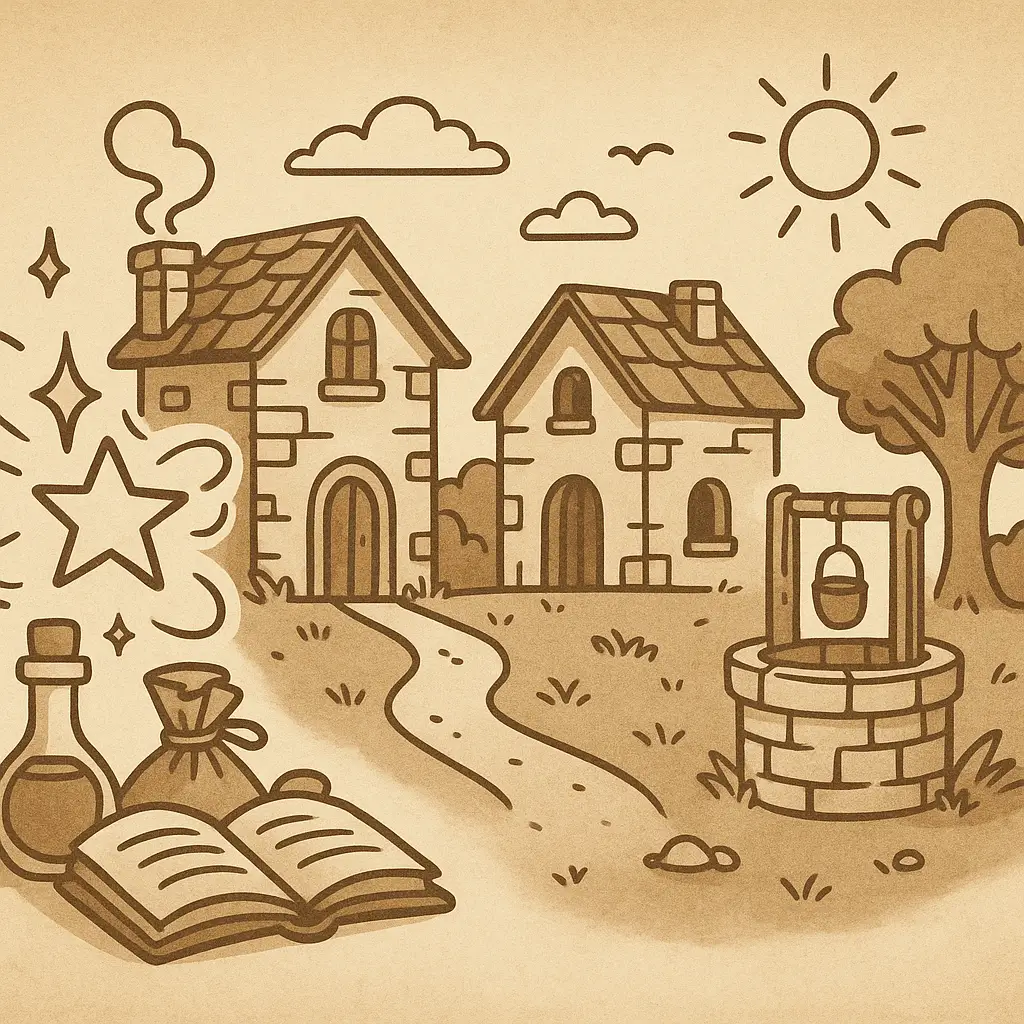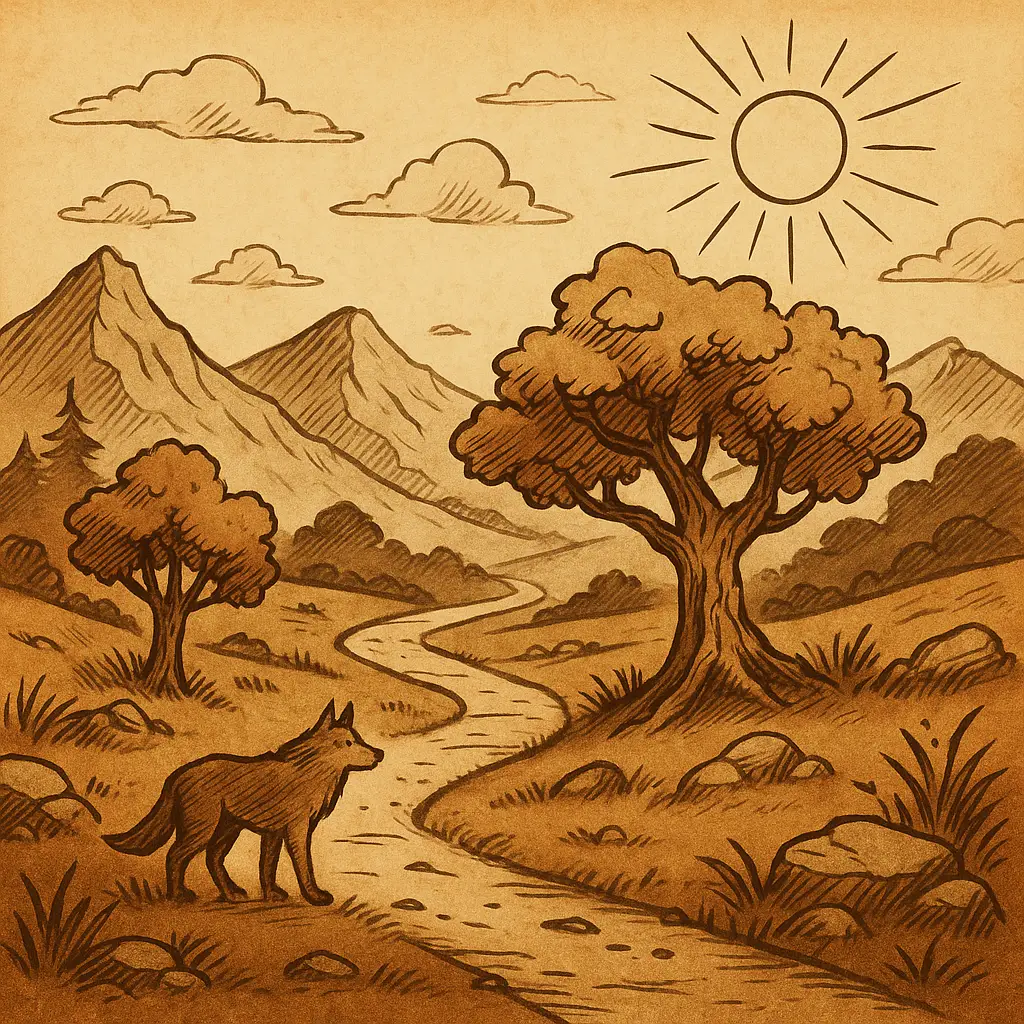How to Incorporate Moral Nuance and Character Growth in Systems Without a Strict Alignment Grid
In classic tabletop roleplaying games, alignment used to be everything.
Were you a righteous Paladin of Lawful Good, smiting evil with moral clarity? Or a Chaotic Neutral wild card, lovingly unpredictable and always three steps from “it’s what my character would do”?
Alignment—especially in legacy systems like early Dungeons & Dragons—offered a convenient way to categorize morality. Nine-point grids. Cosmic charts. Arguments over whether lying to a bandit violated your Neutral Good oath.
But what happens when you play a system that doesn’t use alignment?
Modern games like Blades in the Dark, Monster of the Week, Numenera, and even Pathfinder 2e (in most cases) don’t require alignment for character creation or behavior. Even in 5e, alignment has become more of a vague suggestion than a mechanical constant.
So how do we roleplay moral depth without the training wheels of alignment boxes?
How do we build character arcs that feel real, ethical dilemmas that bite, and party chemistry that grows organically?
Let’s break it down.
🧠 Why Alignment Vanished from Many Modern TTRPGs
Before we dive into how to do moral roleplay without it, let’s talk about why the alignment system is disappearing from many game systems.
The Problems with Traditional Alignment:
- Too rigid: Nine boxes can’t capture the complexity of morality.
- Overused as excuse: “Sorry I burned down the orphanage, I’m Chaotic Neutral!”
- Often weaponized: Players using alignment to justify trolling, betrayal, or selfishness.
- Narratively shallow: Static alignment rarely encourages character growth or change.
- Redundant with strong roleplay: Good players already act according to values.
Game designers today trust players to be more nuanced. They want character actions to be shaped by motivation and circumstance, not railroaded by a moral compass invented in the 1970s.
So the onus is on you, the player or GM, to bring moral complexity to the table.
And honestly? That’s where the fun begins.

🌱 1. Start with Values, Not Vibes
If there’s no Lawful Good box to put yourself in, what do you replace it with?
Core values. Your character needs a personal moral compass, even if it’s skewed.
Ask yourself:
- What does my character believe is worth protecting?
- What would they never do?
- Who do they trust—or fear?
- What do they see as “weakness” or “strength”?
- Who taught them what was “right” in the first place?
Example:
Lira is a smuggler who was raised by a revolutionary movement. She doesn’t believe in laws, but she deeply believes in protecting the poor. She sees wealth as inherently violent.
That’s a moral framework, and it’s far richer than “Chaotic Good.”
🎭 Tip for Players: Write your character’s core values on your sheet like a mini mission statement. It’s more actionable than alignment, and more interesting to question.
🔄 2. Let Morality Evolve with the Story
Characters change. Or at least, they should.
If your character is exactly the same at level 10 as they were at level 1, something’s probably gone stale.
Without alignment keeping you static, you’re free to grow. Or backslide. Or break.
Track moral evolution by answering questions like:
- What recent event challenged one of my core beliefs?
- Did I regret something my character did?
- Has someone changed how I see myself?
- Would I make the same decision twice?
Example:
Your ex-assassin turns down a contract for the first time. They don’t know why. But it feels different. They sleep better. Or maybe worse.
That’s character growth.
📖 Tip for GMs: Build arcs around player dilemmas, not just plot threats. What happens when their values cost them something big?
⚔️ 3. Morality Is a Knife. Hand It to the GM.
If you want a truly engaging character arc, give the GM the tools to cut deep.
Write down a few triggers, soft spots, or contradictions in your character’s moral compass. Then hand those to your GM and say:
“Use these against me. Please.”
This might include:
- A loved one who’s in danger (or working against them)
- A lie they tell themselves to justify their actions
- A fear of becoming like someone from their past
- A desire that conflicts with their stated ideals
Example:
Your noble diplomat swears they won’t torture for information. But their sister is missing. The trail’s cold. The enemy’s mouth is shut. What do they do?
Great drama lies where ideals meet pressure.
🧠 Tip for GMs: Players love it when you remember their values. Use NPCs, dilemmas, and consequences that poke at those values.
🔄 4. Track Flaws, Regrets, and Contradictions
Forget “Lawful Good.” Try this instead:
| Trait | Current Belief |
|---|---|
| Value | All life is sacred |
| Contradiction | I’ve killed before. Many times. |
| Flaw | Quick to judge those who justify murder |
| Regret | Letting a hostage die because I refused to shoot |
Now we’re cooking.
This approach:
- Encourages reflection
- Supports story growth
- Feels emotionally real
Bonus: You can evolve these traits over time. Change a belief. Resolve a regret. Add a contradiction. It’s your character’s internal journal of becoming.
🔄 5. Your Character Isn’t a Moral Island
You’re not roleplaying in a vacuum.
Your character’s morals should clash, reinforce, or evolve alongside the party’s dynamics.
Use this interplay to:
- Challenge each other respectfully: “How can you just walk away from them?”
- Bond over shared ideals: “We’ve both seen what power does. Let’s not become that.”
- Create arcs where one PC influences another’s ethics over time
Example:
The Paladin’s strict code and the Warlock’s pragmatism clash—until they both save the same innocent for different reasons, and realize they’re not so different.
Alignment grids discourage this nuance. But value-based characters thrive in it.
🤝 Tip: Use session zero to discuss moral alignments and potential friction in-character. It sets the stage for real growth and tension.
🧰 6. Build Mechanical Reinforcement (Even If the System Doesn’t)
Most alignment-free systems leave morality narrative-only. But that doesn’t mean you can’t reward or reflect moral choices mechanically.
Ideas include:
- Custom Conditions: If your character breaks a personal vow, they get a debuff until they atone.
- Boons or Banes: Let characters unlock special feats, powers, or blessings tied to their values.
- Faction Reputation: Morality can shape how NPCs treat you.
- Devotion Points: Track a character’s fidelity to a belief or deity and let it affect outcomes.
Even something as simple as “If I lie, I can’t use my ‘Clear Conscience’ ability this session” adds weight to decisions.
⚙️ Tip for GMs: Ask players for a “Code or Complication” in character creation. Then build 1–2 rules-light effects around it.
🎭 7. Lean into Tone, Setting, and Culture
Morality is contextual. A character raised in a necromancer’s society might genuinely see reanimating the dead as respectful, not evil. A revolutionary might believe murder is a regrettable necessity.
Your setting should shape how characters think about right and wrong.
Questions to explore:
- What does this culture value above all?
- How do their gods define justice?
- What are their taboos or sacred rules?
- How do law and morality diverge?
Example:
In your desert campaign, hospitality is sacred. Killing a guest under your roof is unforgivable. Your Barbarian just violated that. Now what?
When the world has moral systems, players are more likely to engage with their own.
🔄 8. Ditch the “Good vs Evil” Binary
We’re not in a 1980s cartoon anymore.
Try thinking in terms of:
- Selfish vs Selfless
- Merciful vs Ruthless
- Pragmatic vs Idealistic
- Conformist vs Rebel
- Sacrifice vs Survival
This approach creates spectrums, not boxes. It allows characters to exist between definitions—or move across them.
“I used to think killing was always wrong. Then I watched someone I loved die because I hesitated. Now I’m not so sure.”
That’s the kind of shift that alignment can’t track—but it’s the heartbeat of great storytelling.
🔥 9. Make Morality Cost Something
In an alignment-light game, moral actions must carry weight. Otherwise, what’s the point?
Let goodness hurt. Let selfishness work. Then let players choose anyway.
- Mercy lets a villain escape.
- Honesty costs a reward.
- Betrayal gets a tactical advantage.
- Trust leads to betrayal.
The best stories aren’t “Good wins because it’s good.” They’re “I did the right thing—and paid for it. And I’d do it again.”
Let players feel that.
🧨 Tip: Tie moral choices to stakes the players care about. Force real decisions.
🪞 10. Treat Alignment-Free Roleplay Like a Mirror
Here’s the secret:
How your character defines morality often says something about you.
Whether it’s:
- Exploring ethical ambiguity
- Playing out consequences of a hardline worldview
- Healing something through heroism
TTRPGs let us test ideas in a sandbox of imagination. So lean into that.
You don’t need an alignment label to explore what it means to be good. Or just. Or true. Or powerful.
All you need is a character. A table. And the courage to ask: What kind of person am I becoming in this story?
🎲 Final Thoughts: Alignment Grid Optional—Morality, Mandatory
You don’t need nine boxes to play a great character.
You need values. Flaws. Choices. Consequences.
Morality in alignment-free systems isn’t a restriction—it’s a freedom. A blank slate. A chance to create something real.
So next time you roll up a new character, skip the alignment section.
Instead, ask:
- What do I believe in?
- What would make me betray that?
- And how will the story change me?
Because at the end of the day, the best heroes—and villains—aren’t defined by a grid.
They’re defined by their choices.

